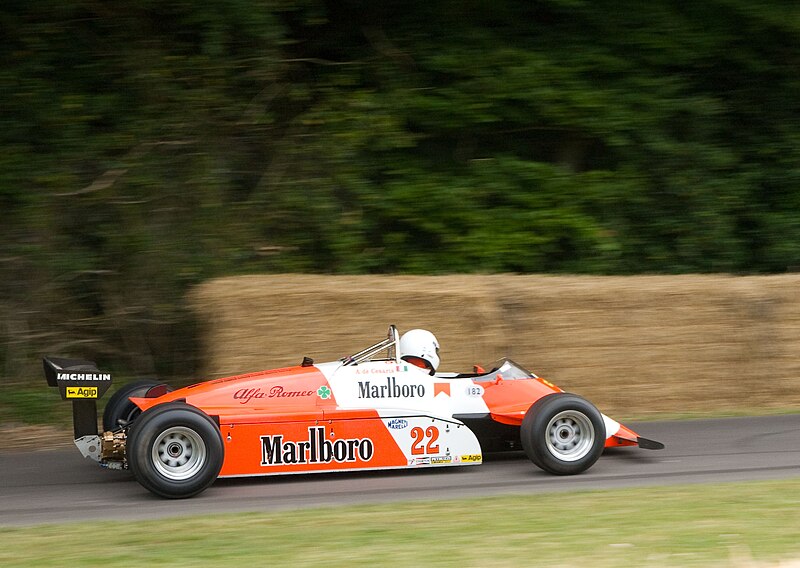Alfa Romeo Formula One Cars in the 1980s – 182, 183T, 184T & 185T
The 1980s were a fascinating era for Formula One, and Alfa Romeo left a distinct mark with its line of competitive and technologically advanced racing machines. From the sleek Alfa Romeo 182 to the turbocharged 185T, each car reflected engineering innovation, distinctive V12 and V8 engines, and drivers’ courage pushing the limits on the racetrack. Let’s explore these legendary F1 cars, their history, specs, and unforgettable racing moments.
Alfa Romeo 182 (1982) – Classic V12 Power

The Alfa Romeo 182 debuted in the 1982 Formula One season, making its first appearance at the Brazilian Grand Prix. Driven by Andrea de Cesaris, it achieved pole position at Long Beach with an average speed of 141.331 km/h (87.819 mph) and a podium finish in Monaco.
- Engine: 3.0 L V12 producing 540 hp (403 kW) at 12,000 rpm.
- Variants: 182B introduced at Belgian GP with narrower chassis and new exhaust/side skirts.
- Turbo Test: 182T tested at Italian GP with V8 turbo engine (later evolved into 183T).
- Races: Alfa used 179D, 182, and 182B during the season with varying entries.
The 182 combined classic Alfa Romeo engineering with emerging aerodynamic innovations, representing a strong presence in early 1980s F1.
Alfa Romeo 183T (1983) – Turbo Era Begins
.jfif)
The 183T marked Alfa Romeo’s transition into the turbocharged era in 1983. Designed by Gérard Ducarouge and Mario Tollentino for Marlboro Team Alfa Romeo, the 183T featured a newly designed flat bottom and competed on French Michelins.
- Drivers: Andrea de Cesaris and Mauro Baldi.
- Performance: 18 points in 29 entries, including two 2nd-place finishes and a fastest lap at Spa-Francorchamps.
- Legacy: Retired after 1983 and replaced by the 184T.
Alfa Romeo 184T (1984) – Turbocharged V8 Era

The 184T raced during 1984 and 1985 seasons. Designed by Mario Tollentino, it featured a 1.5 L V8 turbo engine producing 680 hp (507 kW) at 10,700 rpm. The car bore Benetton sponsorship colors and achieved a notable podium at the 1984 Italian GP with Riccardo Patrese finishing 3rd.
- Fuel consumption issues due to 1984 regulations limiting 220 litres per race.
- Engine reliability problems caused multiple retirements.
- Updated 184T brought back as 184TB in 1985 for compliance with new regulations.

Alfa Romeo 185T (1985) – Final F1 Chapter
The 185T was Alfa Romeo’s final F1 entry in 1985. Despite innovative engineering and drivers Riccardo Patrese and Eddie Cheever, the car struggled with reliability and performance. It participated in 8 races but the team reverted to the updated 184TB for most events.
- Monaco GP 1985: Patrese involved in a dramatic collision with Nelson Piquet's Brabham-BMW.
- Cheever qualified 4th at Monaco — best qualifying for 185T.
- Riccardo Patrese later described 185T as "The worst car I ever drove".
Conclusion
The Alfa Romeo F1 cars of the 1980s were a remarkable mix of engineering ambition, turbocharged innovation, and competitive challenges. From the V12 182 to the turbocharged 185T, each car tells a story of racing evolution, driver skill, and Alfa Romeo’s relentless pursuit of speed and performance in Formula One history.







.jfif)


No comments:
Post a Comment